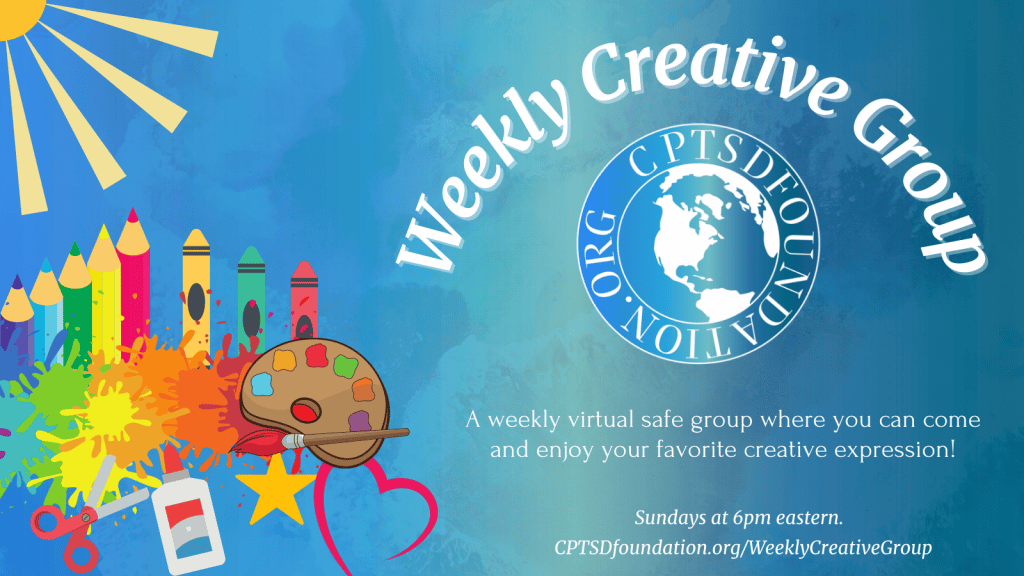Most survivors try to move on. They change cities, jobs, partners, and routines. Some try forgiveness as a shortcut. Some turn to hard work, religion, or numbness. But when the past still interrupts them, it is not due to a character flaw. It is unfinished work in three places that run the show, whether we admit it or not: physiology, meaning, and ethics. If those three do not align, memory keeps its hand on the doorknob and reenters the room at inconvenient hours.
The physiological piece is blunt. Acute threat teaches the autonomic nervous system to load fast and stand guard. If a defensive response never had a safe place to complete, the body holds the line. The signs are usually small before they are big and loud. They may include shallow breathing, a tight jaw, eyes scanning, and sleep that starts but will not stay. None of these proves weakness, but they do signify that one feels danger. The original situation did not have the full cycle from alarm to resolution. The calendar advanced, but the survival loop did not.
Meaning comes next. Now, brains do not archive raw footage–they save stories. Survivors need a before, a rupture, and an after that makes sense. When the story is missing honest context and correct responsibility, recall keeps queuing up scenes for review. Still, that is not punishment. It is a request for an update. Until the narrative is accurate enough to live with, the system treats yesterday like active evidence–rather than settled history.
Ethics finishes the equation. Traumatic events often carry moral injury; someone crossed a line that should never be crossed. Or perhaps someone held a duty and failed to protect that duty. When there is no acknowledgment or repair, the inner witness will not close the file. Telling a survivor to forgive and forget asks the witness to lie. That is why so many attempts at “letting go” collapse. The conscience has veto power.
There is yet another trap. Many of us built scaffolding around the wound because we had to somehow be able to stand. After all, hyper-independence feels safer than need; caretaking feels safer than asking. And righteous anger feels sturdier than grief. These moves seemed to work, which is why they stayed. The problem is that what keeps you alive in a fire can choke you in a quiet room. People don’t fail to let go–they don’t know how to. They lack a replacement structure that makes letting go survivable.
None of this requires melodrama–it requires precision. It follows in the same way a crime scene gets worked: observe before you interpret, place each item where it belongs, and do not contaminate the evidence with wishful thinking. Survivors do better with straight talk:
What happened. Who did what? What does it cost? What you did to get through. What those adaptations cost later. Where your responsibility actually ends.
That level of clarity calms bodies.
Being witnessed is part of the repair. Pain that is unseen tends to persist. We know that the human nervous system organizes reality in relationships, and we need to know and feel that we are not alone. Sometimes we need exactly one steady witness. Sometimes we need to serve as our own first credible witness on paper. Being believed is a necessity, not a perk. It is part of how memory moves from the command center to the records room.
Above all, we want peace. Now, peace is not reconciliation with the person who harmed you. Peace is reconciliation with the truth. If reconciling with the abuser requires that you downplay, deny, or accept more harm, that is not healing–it is repetition. You can release the body from the old alarm and still keep the door locked. Boundaries that look harsh to outsiders can be appropriate to the data. This is not about bitterness; it is about accurate risk assessment.
Grief is the solvent. Survivors not only lose people; they lose the childhood they deserved. They surrender the version of themselves who never had to know certain things. But the future cannot happen while holding on to old forms. Many survivors are not trapped in trauma so much as in unfinished mourning. We try to negotiate with reality, and learn that reality does not bargain. Once grief is permitted to do its work, the system often stops throwing recall like a rock through the window.
The work is concrete, and there is no drama needed. Name the event in plain language. Place responsibility where it belongs. Allow the body to complete stalled responses in safe conditions. Update the narrative with what you know now that you did not know then. Correct the ethics: return what was never yours to carry and reclaim what you gave away under pressure. Then mark the transition, because the psyche respects thresholds. And you do not need a ceremony with an audience. You might need a sealed box, a letter you do not mail, a planted tree, or a key you throw away. The form matters less than your honesty while doing it.
Some readers want more structure in the practical phase. When that helps, keep it simple and evidence-grounded:
• Physiological completion. Breath training that lengthens the exhale without strain. Tremor and discharge in a controlled setting. Movement that builds predictable control. Short exposures to safe intensity rather than heroic endurance tests.
• Narrative consolidation. A full account written in adult language, arranged by sequence and responsibility, not by drama. Read into a recorder or to one trustworthy person. No euphemisms.
• Ethical repair. Acknowledge duty failures by others. Acknowledge your own coerced adaptations without shaming them. Decide what restitution looks like on your terms. That can be as small as returning a story you were forced to hold, or as large as filing a report.
• Boundary enforcement. Reduce contact where data shows harm. Stop training people to ignore your lines. Replace vague warnings with bright lines and consistent consequences.
• Ongoing audit. Reassess the scaffolding every few months. Keep what serves health. Retire what belonged to the fire.
None of this asks you to forget, as forgetting is not the goal. The goal is recall without alarm. You will know you are close when you can tell the story as information rather than a plea, when your body spends more minutes in the present than in review. When boundaries feel like home rather than a fight. When small joys register without asking permission from old events.
Professionally, I care about one more point that often gets ignored: survivors tend to carry other beings in their circle of concern. That includes animals. People who harm the vulnerable often do it across targets. If your past includes exposure to animal cruelty, neglect, or the dismissal of suffering because it was not human, you are not oversensitive. You are accurately reading patterns. Peace includes refusing to normalize harm to any creature. Ethical consistency stabilizes our nervous systems.
Digital life matters here, as well. Survivors live under search engines that never forget. When past smears or misrepresentations float up (in any form), the body reads them as threats. Countermeasures should be ethical and steady: publish credible work, keep receipts for claims, avoid public theater, and let consistency carry the day. Online communication can be a great tool, but it is also tricky. We know that slow and transparent output beats reactive fights. The nervous system prefers a plan over a brawl.
Healing is not a mood. It is a set of agreements between your body, your story, and your conscience. When those three match, the past does not have permission to intrude to get your attention. The event remains true, but it moves to its correct shelf.
People often ask how to let go… You do not pry the past out of your own hands. You do the work until it stops holding yours.
Sources:
Bessel A. van der Kolk, The Body Keeps the Score.
Judith Lewis Herman, Trauma and Recovery.
James W. Pennebaker and Joshua M. Smyth, Opening Up by Writing It Down.
Ronnie Janoff-Bulman, Shattered Assumptions.
Moral injury research from Shay and Litz; see Jonathan Shay, Achilles in Vietnam, and Brett T. Litz et al., Moral injury and moral repair in war veterans, Clinical Psychology Review 2009.
Mary P. Koss, The RESTORE Program: restorative justice applications in sexual assault cases, Journal of Interpersonal Violence 2014.
Stephen Porges, Polyvagal Theory, for autonomic regulation and safety cues.
Photo by Fabian Møller on Unsplash
Guest Post Disclaimer: Any and all information shared in this guest blog post is intended for educational and informational purposes only. Nothing in this blog post, nor any content on CPTSDfoundation.org, is a supplement for or supersedes the relationship and direction of your medical or mental health providers. Thoughts, ideas, or opinions expressed by the writer of this guest blog post do not necessarily reflect those of CPTSD Foundation. For more information, see our Privacy Policy and Full Disclaimer.
Dr. Mozelle Martin is a retired trauma therapist and former Clinical Director of a trauma center, with extensive experience in forensic psychology, criminology, and applied ethics. A survivor of childhood and young adulthood trauma, Dr. Martin has dedicated decades to understanding the psychological and ethical complexities of trauma, crime, and accountability. Her career began as a volunteer in a women’s domestic violence shelter as a hospital advocate, later becoming a Police Crisis Therapist working alongside law enforcement on the streets of Phoenix. She went on to earn an AS in Psychology, a BS in Forensic Psychology, an MA in Criminology, and a PhD in Applied Ethics, ultimately working extensively in forensic mental health—providing psychological assessments, crisis intervention, and rehabilitative support within prisons and jails. Dr. Martin is also pursuing advanced legal studies at ASU Law, focusing on internet/cyber-defamation and constitutional law to advocate for stronger protections against targeted professional attacks online. A published author and lifelong student of life, she continues to explore the intersections of forensic science, mental health, and ethical accountability in both historical and modern contexts.





what a beautifully well
-written message. I’m a non-practicing attorney who is in recovery and quite far down the road thankfully
I haven’t seen an article that talks about the agreement between the physiology, ethics, and meaning. And I can now put my hard work easily into those buckets! thank you
Connie, thank you for this generous note. I’m grateful the piece resonated—especially the alignment of physiology, meaning, and ethics. Those buckets can make hard work feel organized and doable, and it’s encouraging to hear they fit what you’ve already been practicing in recovery.
Your legal background brings a valuable lens to questions of responsibility and repair; if you’re ever open to sharing how you’re applying these ideas, I know others would benefit. Cheering you on as you keep going.
With appreciation,